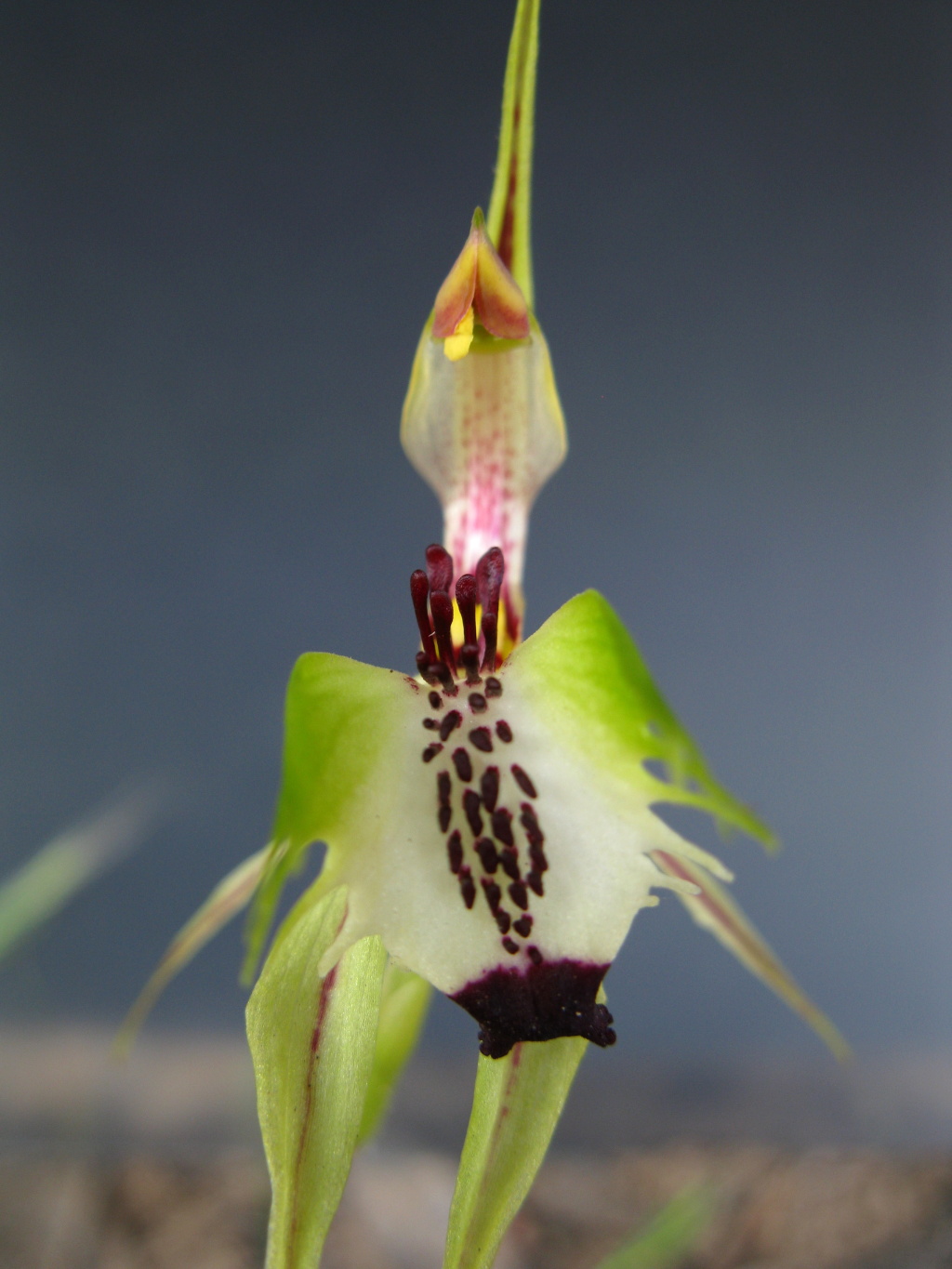Caladenia tensa
G.W.CarrFlowering plant 20–30 cm tall. Leaf 6–12 cm long, 10–15 mm wide, often spotted red at base. Flowers 1 or 2; perianth segments 2.5–4 cm long, green with red central stripe, sepals bearing moderately thin orange to brown apical osmophores 6–9 mm long; dorsal sepal erect, 2–3 mm wide, tip drooping; lateral sepals projected forwards stiffly, slightly divergent, asymmetric, dilated at base, 3–3.5 mm wide, tapered to a filiform tail; petals deflexed, 1.5–2 mm wide. Labellum loosely hinged, curved forward with lateral lobes erect and tip of mid-lobe curved under, prominently 3-lobed, 18–20 mm long and 18–22 mm wide (when flattened), green at base, grading to white then with a dark purple mid-lobe; larger comb-teeth on lateral lobes 4 mm long, rising nearly to anther tip, mid-lobe irregularly and broadly toothed or scalloped; lamina calli in 4 uncrowded rows extending onto base of mid-lobe, linear to narrowly club-shaped, to 3 mm long at base of labellum, shorter and with broader heads towards apex. Flowers Sep.–Oct.
LoM, MuM, Wim, GleP, Gold. Also ?SA. In Victoria found mainly in the Little Desert area (also with an isolated record for near Wood Wood) in Eucalyptus/Callitris woodland on well-drained sandy soil.
Caladenia tensa is distinguished from the closely related C. tentaculata by its generally smaller flowers and the more or less straight, rigid lateral sepals with shorter clubs.
A poorly known taxon that requires further study to clarify its circumscription.
Entwisle, T.J. (1994). Orchidaceae. In: Walsh, N.G.; Entwisle, T.J., Flora of Victoria Vol. 2, Ferns and Allied Plants, Conifers and Monocotyledons, pp. 740–901. Inkata Press, Melbourne.
 Spinning
Spinning

